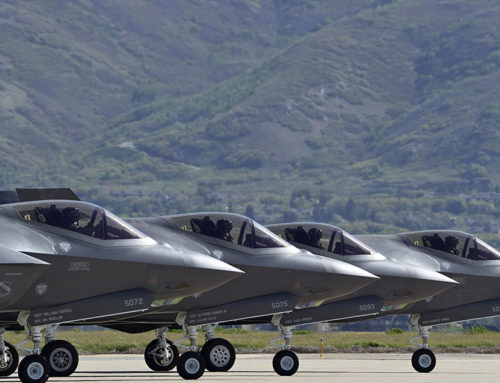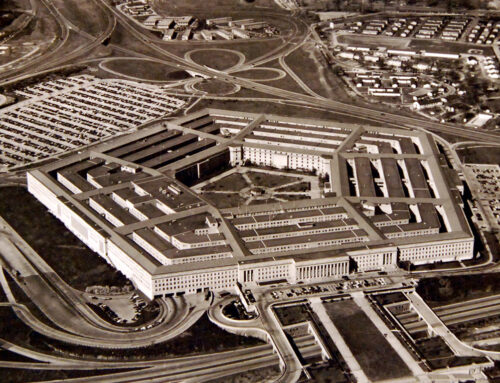Thanks for the Memories is best known as Bob Hope’s signature song, but Frank Sinatra also sang a version including the lyrics, “Thanks for the memory of things I can’t forget; journeys on a jet, our wonderous week in Martinique, and Vegas and roulette…” So, prepare to take a journey on a military jet on the hunt for some fiscal sanity in a tune we’re calling “Thanks for the Legacies.”
For years, the Air Force and Navy have attempted to retire so-called “legacy programs” currently in the inventory. But parochial forces in Congress keep stopping them.
Last year, we pulled together a potential cut list of programs we recommended for the so-called “Legacy Systems Review” being done at the Pentagon. Many of the programs on the TCS list are there because the military services have been trying to divest themselves of the platform for years. Giving up force structure is not a decision any military service takes lightly. We believe when a service says it needs fewer of anything, the Congress should thoughtfully consider that request.
Instead, a knee-jerk negative reaction often follows due to where the program is produced or where it is stationed. The “general provisions” of the annual Pentagon spending bill or bill language in the Defense authorization bill are often used to block the divestiture or even just a reduction in inventory of several aircraft programs: the E-8 JSTARS, the RC-125 and the EQ-4. These requested retirements aren’t politically motivated; they’ve been in the Air Force’s annual budget request since at least the Trump Administration. But the push back is purely parochial.
This year’s Air Force budget request plans to reduce aircraft inventory by 238 (116 active duty, 44 Air Force Reserve, 78 Air National Guard) of a total aircraft inventory of 5,178. Systems proposed for significant reductions in FY23 include E-3Gs (from 27 aircraft to 16), E-8Cs (from 12 aircraft to 4), F-15Cs (from 168 aircraft to 107), F-16Cs (from 750 to 703), F-22s (from 186 to 153), HH-60Gs (from 82 to 60) and KC-135Rs (from 322-308).
This roughly 4.5% reduction in inventory is explained this way in the Fiscal Year 2023 Budget Request Overview, “This budget request balances short-term risk of legacy platform replacement with modern, more-lethal capabilities required for success in tomorrow’s high-end fight.”
And that’s exactly the point. Focusing on the numbers of aircraft and ships in the inventory ignores that more modern systems can do the job with fewer platforms. (This assumes the Air Force will buy fewer F-35s than it did F-15s and F-16s, but that’s a budget fight for another day.) Hanging on to older force structure in perpetuity while also buying the new stuff is the worst possible compromise. Older platforms can be expensive to maintain and less capable. Because many of these legacy programs still have active procurement programs, Congress tends to push back hard on any retirements. The lawmakers, their constituents, and the government contractor building the legacy system, all want to keep that production line open regardless of need or cost!
But even in a Pentagon budget pushing $800 billion, the military services can’t afford to keep older systems going when replacements have come online.
The most recent Naval shipbuilding plan, begins construction of nine ships in FY23. It also plans to “inactivate” 24 ships. The breakdown is five Cruisers, nine Littoral Combat Ships, two submarines, four Dock Landing Ships, two oilers, and two Expeditionary Transfer Docks. Fifteen of the 24 will be kept in reserve status, making them candidates for potential reactivation.
The most controversial (but not surprising) ship on the list is the Littoral Combat Ship (LCS). Of the 23 LCS that have been commissioned, the Navy wants to mothball nine of them. We say this isn’t surprising because issues with the LCS began before the first keel was laid. The Navy tried to decommission three LCS (built in 2012, 2016 and 2017) as part of the Fiscal Year 2022 budget request and House Appropriators moved to block the plan. As we wrote at the time, “…the whole LCS class has turned out – predictably – to be lemons. The Navy shouldn’t be forced to throw good money after bad.”
Congressional hearings on the FY23 budget request have included negative comments about retiring legacy systems from lawmakers like Rep. Calvert (R-CA). “I fail to see how decommissioning two Navy ships, divesting hundreds of aircraft helps us maintain our strategic combat advantage over these threats.” This of course conveniently ignores the hundreds of ships and thousands of aircraft at hand, plus the new ones being purchased.
On the other hand, Senator Tester (D-MT) asked the question, “But I want to talk about a proposal to get rid of ships that quite frankly, we just put into service. In fact, some of them aren’t even totally put into service yet: the Littoral Combat Ships. How much confidence do you have in the analysis that these things just aren’t fit for the fight?”
To which Secretary of Defense Lloyd Austin replied, “I’m very confident … We’re looking to acquire capabilities that are relevant in the future fight and survivable. The earlier variants of this, the ship that you mentioned, did not live up to expectations. It’s very expensive to maintain. And so, we’ve made the decision that it’d be better to decommission those ships and invest those resources in acquiring capabilities that are more agile and more relevant to the future fight; more survivable.”
The Air Force should take one more journey on those jets. The LCS should take a final sail into the sunset. And Congress should get out of the dang way.














Get Social